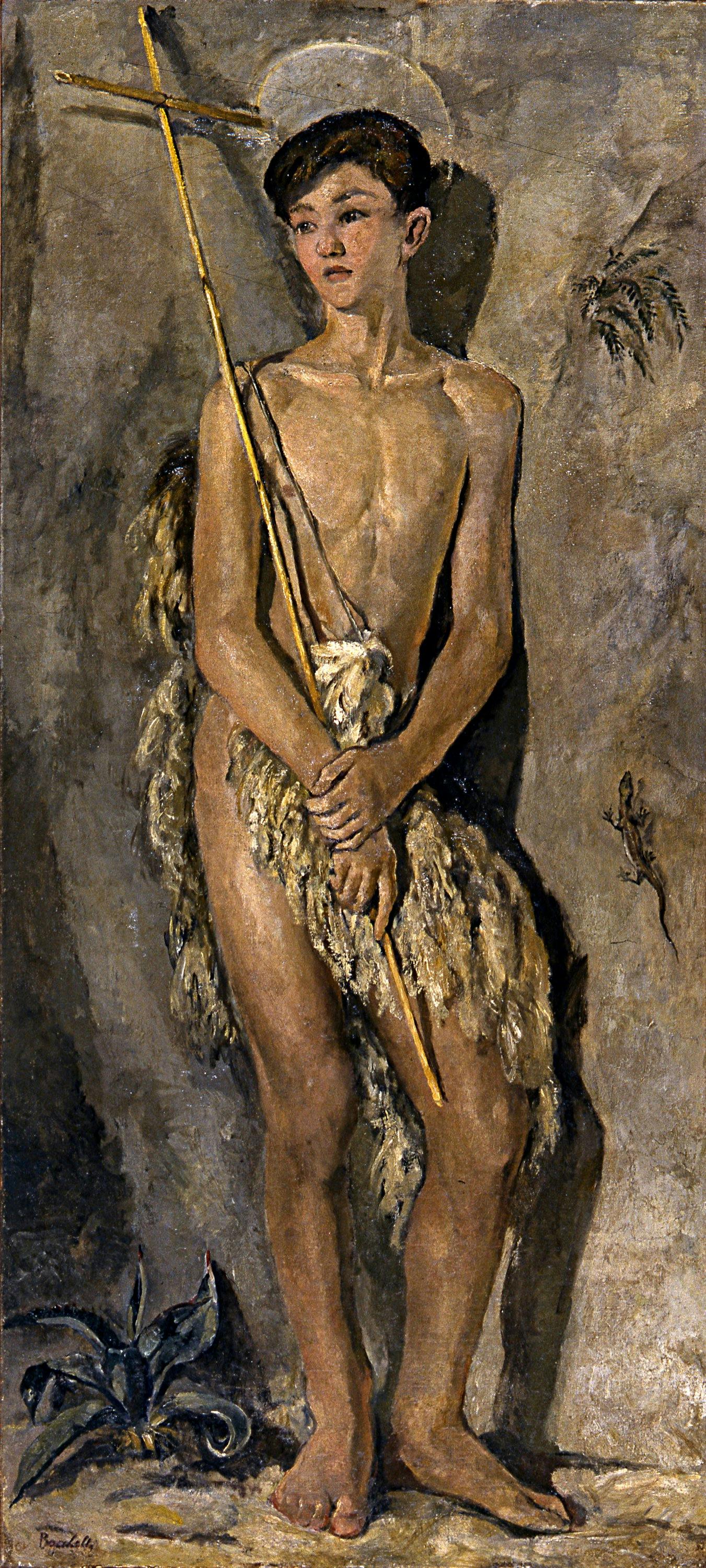Young St. John in the Desert
Mario Bacchelli (Bologna 1893-Memphis 1951)
This bright, thick painting is somewhat reminiscent of the rough surface of a fresco. The slender, kind figure of the very young saint is inspired by famous fifteenth-century depictions by the likes of Donatello and Desiderio da Settignano, and the splendid San Giovannino Martelli by Bargello in particular. The tufts of vegetation and the lizard climbing the wall seem to allude to the erupting vitality of the naturalistic details with which Ghiberti framed the circular bezels of the North Doors of Florence’s Baptistery.
In the 1920s, past masters were systematically studied in order to pick up the thread of tradition shunned by avant-gardes at the beginning of the twentieth century. And it was in the wake of this return that Bacchelli, after being interested in Cubism and Futurism, and having lived in Rome (where he was friends with Armando Spadini), Paris (where he met Auguste Renoir), Brazil and Argentina, returned to the peninsula. “Now I walk like a lover through these Italian cities of ours... and I find within me a great love in the light of the sun that perhaps the Impressionists have taught me better than any modernist; and among the ancients, the masters of the Florentine fifteenth century and the Venetians.”
This depiction of the young prophet seems to take inspiration from a joyful hymn that John’s father Zechariah proclaims after the birth of his son, when he announces his name after regaining the faculty of speech. It is a metaphor for salvation, but also a geographical reference, as it alludes to a road prepared for those arriving on their way to Jerusalem, as the desert surrounding the city forbade the most popular routes.
John makes reference to conversion, dressed in a camel hair as tradition dictates (Zechariah 13), in the inhospitable desert, feeding on the only sources of sustenance that man can trace there. His distant gaze looks beyond the present, into the future of salvation that follows a time of preaching and martyrdom.
